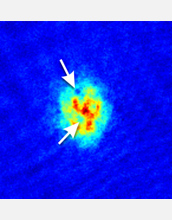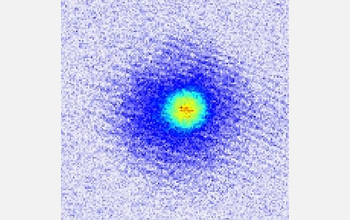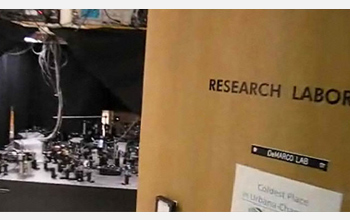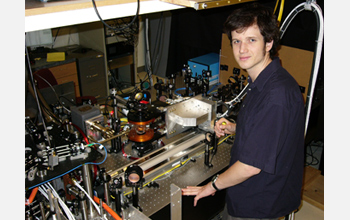|

All Images

Discovery
Beyond Cold: How the World Works at Minus 459 Degrees

Back to article | Note about images
 |
If we let the atoms expand for even longer, 50 thousandths of a second, we can see that quantum vortices have formed. The vortices appear as holes in this image.
Credit: Brian DeMarco, University of Illinois |
Download the high-resolution JPG version of the image. (200 KB)
|
Use your mouse to right-click (or Ctrl-click on a Mac) the link above and choose the option that will save the file or target to your computer.
|
 |
The vortices are made more visible in this image by subtracting off everything but the vortices. These vortices are responsible for stopping the motion of the atoms.
Credit: Brian DeMarco, University of Illinois |
Download the high-resolution JPG version of the image. (141 KB)
|
Use your mouse to right-click (or Ctrl-click on a Mac) the link above and choose the option that will save the file or target to your computer.
|
 |
 View video View video
This animation shows data used to measure how atoms move through the crystal of light. These images are taken after the light is turned off, and the atoms are allowed to freely expand for about 20 thousandths of a second. If you look carefully, you can see that the motion slows down.
Credit: Brian DeMarco, University of Illinois
|
 |
 View video View video
Graduate student David McKay gives a tour of Brian DeMarco's lab at the University of Illinois.
Credit: Brian DeMarco, University of Illinois
|
 |
David McKay, graduate student in Brain DeMarco's lab at the University of Illinois.
Credit: Brian DeMarco, University of Illinois |
Download the high-resolution JPG version of the image. (2 MB)
|
Use your mouse to right-click (or Ctrl-click on a Mac) the link above and choose the option that will save the file or target to your computer.
|
|







